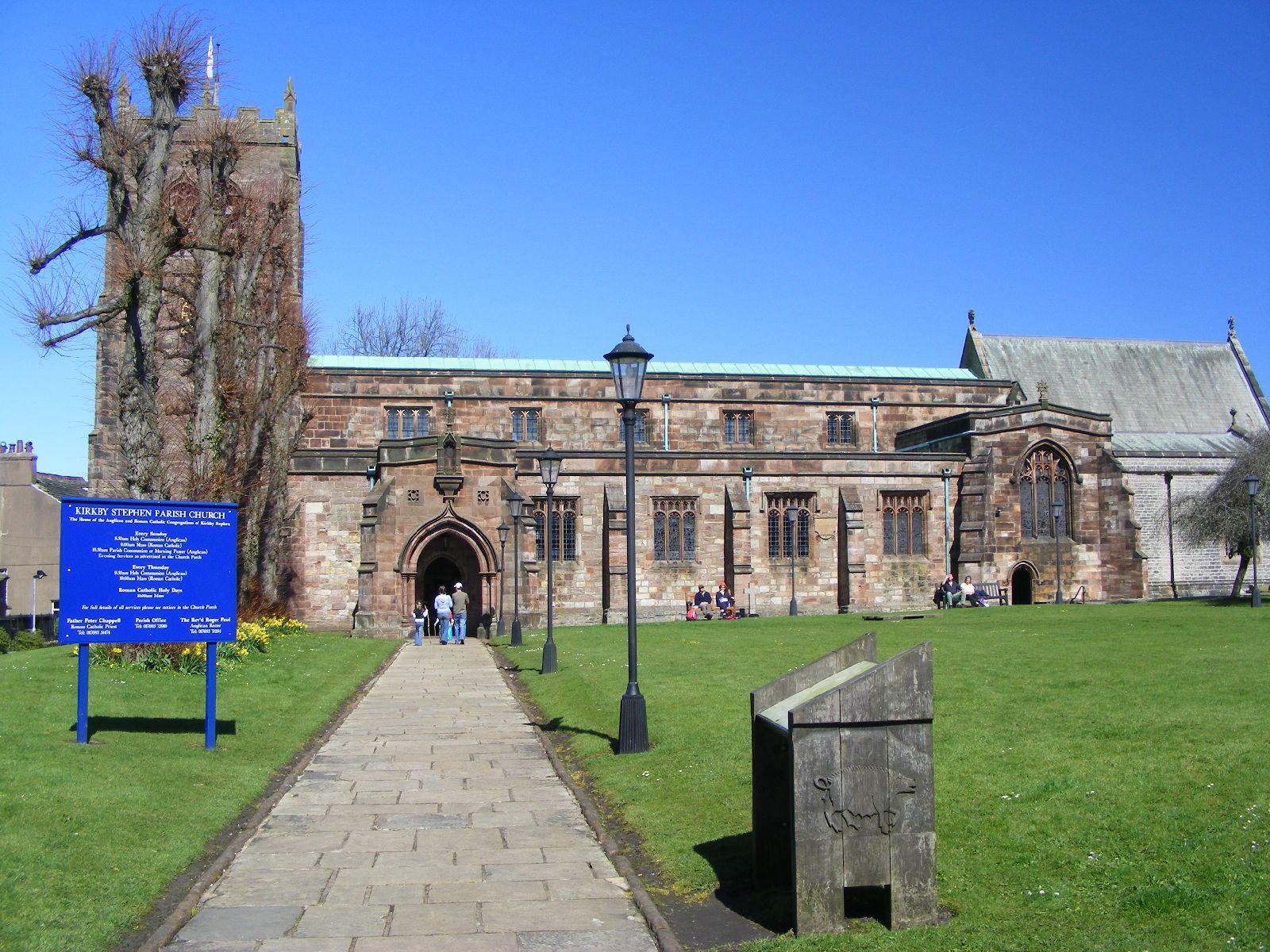St Michael
Brough, Cumbria
Come and walk up the aisle of our beautiful and peaceful church and learn about the lives of the inhabitants of Brough under Stainmore.

Entered from the Market Square through handsome cloisters built in 1810, the parish church stands on the site of a Saxon church and contains many ancient relics.
Kirkby Stephen, Cumbria
The imposing sandstone and brockram building, has evolved from the 12th century through to the mid 19th century. There is plenty for those interested in history, including the 9th century Loki stone, a hog back gravestone, Saxon stone, relics from the 13th century church, 15th century tombs and some fine Victorian glass.
We don't know when the first church was built in Kirkby Stephen, but carved stones date back to when Saxons and then Vikings lived hereabouts.
The most famous stone is 'the Loki stone' it shows a bound, bearded devil representative of the Norse god Loki. According to Nordic myth, Loki was fettered and tormented by his fellow-gods in punishment for the killing of Baldur the Beautiful. The stone dates from around 900-1000 and once formed part of a cross shaft.
'Kirkby' means 'church place' and is a Viking name, presumably Viking settlers built the first church here between 900 and 950. The first record of a church is shortly after 1092, when King William Rufus, the Conqueror's son, took Carlisle and lands to the south from the King of Scotland. The monks of St Mary's Abbey in York built a new church sometime in the 12th century. It didn't last long, but carved stones survive from this Norman church, including a half capital which Sir Nikolaus Pevsner considered the most beautiful Norman capital anywhere in Cumberland and Westmorland.
St Mary's Abbey was presumably responsible for building a new church in around 1230, much of which survives today. Our plain but well proportioned nave arcade, the arch between it and the south transept and most of the north transept are of this period, as are the stone seats and water basin (called by pundits sedilia and piscina) in the south wall of the chancel.
Kirkby Stephen had its ups and downs in medieval times, though it seems to have prospered in the 15th century, when the south aisle was widened, possibly when the woollen trade, for which Kirkby Stephen became well known, was expanding.
In the early 16th century the fine west tower to be added, with the dramatically tall arch between it and the nave. Things turned bad, though, in the 17th century and the church fell into disrepair: it was not until 1847 that major rebuilding began, with the complete reconstruction of the chancel and the two side chapels. In 1871 the nave roof was raised and the present clerestory added.
Brough, Cumbria
Come and walk up the aisle of our beautiful and peaceful church and learn about the lives of the inhabitants of Brough under Stainmore.
Warcop, Cumbria
Great Asby, Cumbria
Asby is an ancient parish, the original church building can be traced back to before the Norman Invasion with the new church built on the same site in 1866.